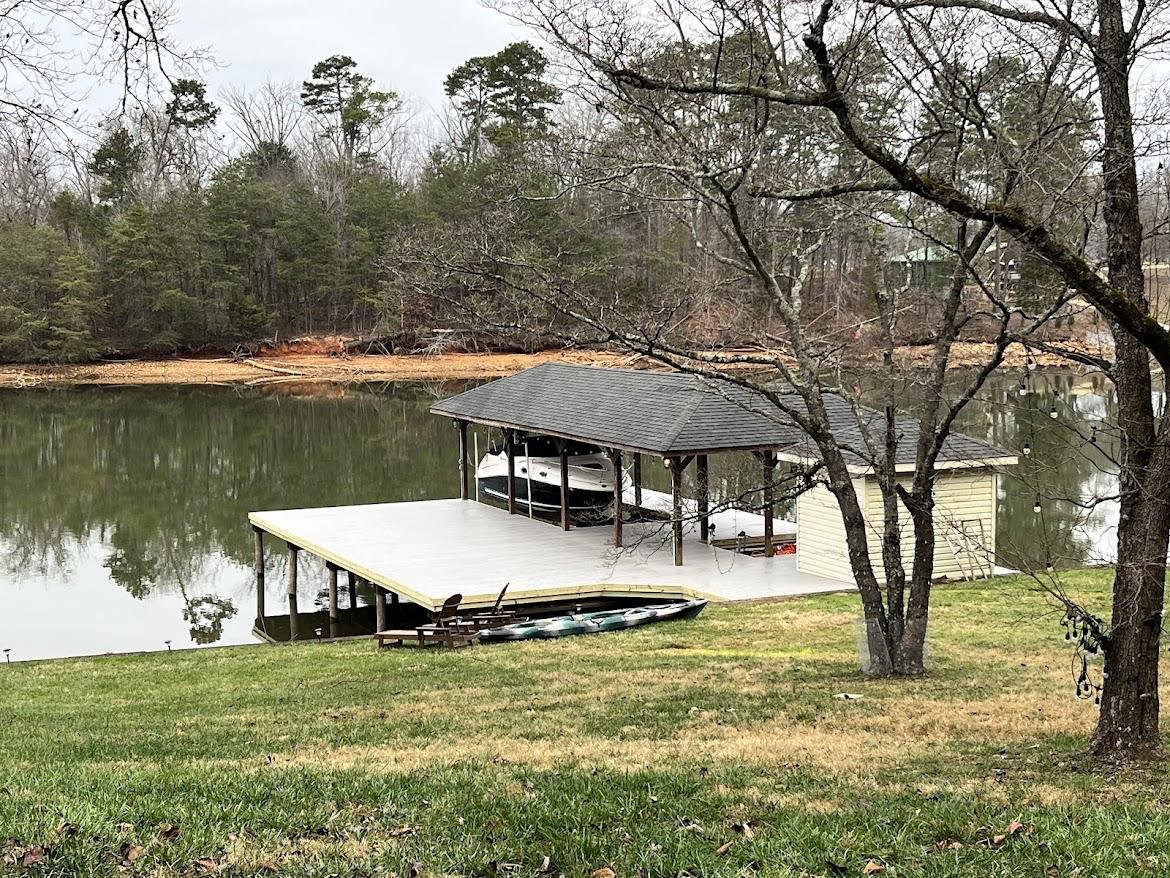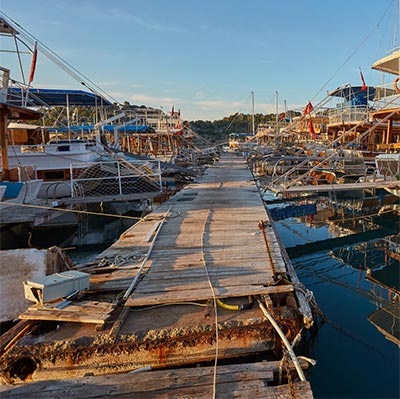The Importance of Timely Dock Repairs for Waterside Safety
The Importance of Timely Dock Repairs for Waterside Safety
Blog Article
Just How to Address Common Dock Repair Service Issues for Safe Water Tasks

Identifying Common Dock Issues
Identifying typical dock concerns is essential for preserving the performance and safety of your beachfront building. Regular inspections can aid uncover troubles prior to they become serious, ensuring both the long life of the dock and the security of those that utilize it. One widespread problem is loose or rusty fasteners. With time, screws, screws, and various other bolts can become loosened due to consistent exposure to water and weather condition aspects, resulting in architectural instability.
One more common trouble is the degradation of flotation protection gadgets. These devices are crucial for keeping the dock resilient, and any damages or punctures can trigger the dock to checklist or sink. Consistently looking for leakages or water logged drifts can preempt more considerable concerns.
Additionally, algae and barnacle buildup on the dock's surface can produce unsafe and unsafe problems. This biofouling not only poses a threat to customers but can also speed up the deterioration of the dock materials.
Finally, inspecting for indicators of rust on steel elements is essential. Corrosion can jeopardize the integrity of the dock's structure, making it unsafe. By regularly identifying these usual dock problems, you can make sure that your dock continues to be safe and secure and practical for several years ahead.
Repairing Rotting Timber
When attending to the issue of deteriorating wood on your dock, it is necessary to act promptly to avoid further degeneration. Begin by extensively examining the entire framework to identify all influenced locations. Utilize a screwdriver to probe the wood; if it sinks in conveniently, the wood is likely deteriorated and needs immediate interest.
Be sure to reduce back to healthy and balanced, solid wood, guaranteeing you remove all endangered material. After elimination, deal with the staying wood with a wood preservative to avoid future rot.
Next, change the eliminated sections with marine-grade lumber or pressure-treated wood, which are much more resistant to water damages. Protect the brand-new pieces with stainless-steel or galvanized fasteners to protect against corrosion. Furthermore, applying a waterproof sealer to the brand-new timber can give an additional layer of defense.
Safeguarding Loose Boards
Just how do you guarantee your dock remains secure and functional for all its users? One important aspect is protecting loosened boards, which can or else posture considerable threats. Loose boards not only enhance the threat of stumbling but can likewise endanger the structural stability of the whole dock.

For reinstallation, make use of stainless or galvanized steel screws, as these materials provide exceptional resistance to corrosion in aquatic atmospheres. Make sure the screws are long enough to penetrate deep right into the underlying support structure, but not so lengthy that they stick out through the dock's surface. Pre-drilling pilot holes can assist prevent the timber from splitting.
Lastly, maintain a regular evaluation timetable to identify and attend to any type of brand-new issues immediately. By protecting loose boards effectively, you add to the overall safety and durability of your dock, making it a reputable system for water activities.
Maintaining Unsteady Pilings
Ensuring weblink the stability of unstable pilings is vital to keeping a practical and secure dock. Unstable pilings can jeopardize the whole structure, presenting considerable dangers to users and potentially bring about expensive repair work. The very first step in maintaining these important components is a comprehensive evaluation. Check out the pilings for indications of rot, damages, or shifting. Utilize a degree to check for upright alignment and ensure they are driven deep sufficient right into the substratum to supply ample discover this support.
If the pilings are located to be unstable, one effective approach for reinforcement is the use of extra supporting. Cross-bracing with dealt with lumber or galvanized metal can significantly improve security. Anchor the braces safely to both the pilings and the dock frame to distribute lots equally.

Regular upkeep and periodic reassessment of the pilings' stability are important to guaranteeing lasting dock safety and security and capability.
Changing Rusty Hardware
Addressing unsteady pilings is just one element of keeping a dock's honesty; one more crucial worry is changing rustic equipment. Over time, exposure to moisture and salt can result in the oxidation and rust of screws, brackets, and screws, endangering the entire framework's safety and security. Normal inspection for rust is essential, particularly after extreme weather or linked here seasonal changes.
When rustic equipment is identified, instant activity is required. Begin by choosing marine-grade stainless-steel or galvanized equipment, both made to stand up to the extreme aquatic setting. Make sure that you have the proper devices, such as wrenches and screwdrivers, to safely eliminate the old, rusty pieces without creating additional damage to the dock.
After removing the corroded equipment, completely clean the impacted areas to eliminate any kind of residual rust or particles. Apply a rust-inhibiting primer to subjected metal surfaces prior to mounting the brand-new hardware. Tighten up all components firmly to avoid future loosening, and periodically inspect the fittings to guarantee recurring stability.
Changing rustic equipment not only prolongs the dock's lifespan however also considerably improves the safety of water tasks. By proactively taking care of corrosion, you safeguard both the framework and its users, guaranteeing a safe and satisfying beachfront experience.
Final Thought
Regular examinations and maintenance are crucial to resolve usual dock fixing concerns and ensure safe water activities. Such proactive actions add to the general safety and security and performance of dock frameworks, fostering a protected atmosphere for water-based activities.
Making sure the safety and security of water tasks pivots significantly on the correct maintenance and repair of docks (Dock Repairs). These tools are necessary for maintaining the dock resilient, and any damage or punctures can trigger the dock to list or sink. By consistently identifying these common dock issues, you can make sure that your dock continues to be secure and practical for years to come
Ensuring the stability of unsteady pilings is vital to preserving a risk-free and functional dock.Routine examinations and maintenance are crucial to attend to common dock fixing issues and guarantee secure water tasks.
Report this page